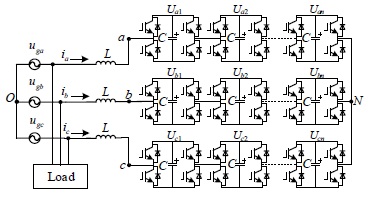- ALL COMPUTER, ELECTRONICS AND MECHANICAL COURSES AVAILABLE…. PROJECT GUIDANCE SINCE 2004. FOR FURTHER DETAILS CALL 9443117328


Projects > ELECTRICAL > 2017 > IEEE > POWER SYSTEMS
Applying model predictive control (MPC) to cascaded H-Bridge multilevel converters, while improving the dynamic performance, suffers from high computation burden due to substantial voltage vectors and switching combinations. In this paper, a simplified branch and bound approach is proposed to reduce the computation of the MPC for a cascaded H-Bridge Static Synchronous Compensator (STATCOM). The underlying optimization problem of the current predictive control is a two-variable integer quadratic programming problem. With the proposed approach, the global optimal voltage vector can be selected within linear time instead of polynomial time. This is achieved by selecting the possible values of one variable as the branch, and enumerating the optimal integer results of each branch. The execution time of the proposed approach and conventional methods are compared to demonstrate the effectiveness of the proposed approach. Simulation and experimental results for a seven-level cascaded H-Bridge STATCOM system are presented to verify the usability and reliability of the proposed approach.
Reactive Current Reference Algorithm.
This paper has presented a simplified branch and bound approach for the optimization of the MPC schemes of the multilevel CHB STATCOM. The proposed approach is adopted to select the global optimal vector in the current predictive control loop. Since only 4n+1 vectors are evaluated with this approach, the computation complexity of the proposed approach is only linear time, which is proved by the computation results for STATCOM with various stages. The proposed approach consists of the following three steps. First, the optimization problem in the current predictive control loop is transformed to a standard two-variable integer programming problem with the unconventional 60° (gh) coordinate. Second, after selecting the value of one variable as branch, a single-variable integer programming problem can be formulated for each branch. Third, the global optimal integer result can be obtained by enumerating the optimal integer result of every single-variable integer programming problem. Since the number of possible value of the branch is linear to the cascaded stages, the computation complexity of the proposed approach is of a linear time level. Moreover, the proposed algorithm could find the global optimal result, as every branch is considered. Detailed experimental results for a three-phase seven-level (three stages, 9 cells) CHB STATCOM system are presented to demonstrate the efficiency and control performance of the proposed simplified branch and bound method.
Circuit configuration of a multilevel CHB STATCOM
